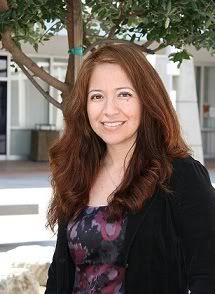Marvelina Barcelo is the co-director of Cerritos College’s Transfer Center and a member of the iFALCON academic success campaign’s leadership team.
Many students often question the student health service fee added to their tuition charges upon enrollment. It is a neat perk to have in college. Paying the $16 fee for the semester allows access to the Student Health and Wellness Clinic (SHWC) services such as urgent and preventive care, women’s and men’s health care along with mental wellness services to name a few (see a complete listing of services). As a college student, I took advantage of the available women’s health care, but could have benefitted greatly from psychological counseling. No one plans to have someone pass away in their family when they are young, but LIFE HAPPENS.
It was overwhelming to have my father pass away during my sophomore year in college, more so because it was due to an overdose. Why would I write about this? I can only write blogs if I stay true to my experiences and I think this is one to share. The importance of knowing how to seek support for the loss of a loved one or any circumstance is crucial.
As a result, I developed my first anxiety attack in college. I did not know how to find help. Going to college was already so new to me. I wanted to talk about my feelings, but not with anyone I knew because I feared people would judge me and my family for what I would share. I lied to many people about the cause of my father’s death. I was very confused about how my father passed away. He was a funny man, the life of the party. I couldn’t map out how a person so high on life could be so high on something dangerous.
A year after my father passed away, one of my favorite and rising comedians, Chris Farley, also overdosed and died, and I had to relive everything all over again. My senior year I took an Educational Psychology class and volunteered to be part of a training video for their Psychology graduate program. This was my first step to open up about my life and remove the stigmas that come along with seeking counseling like having others see you as “crazy” even though the setting was meant as a training. During this training, I was the patient in a therapy setting. All I did was cry during the session. It was an eye opener. I am fortunate that waiting this long to open up did not have other major consequences. But this may not be the case for everyone. Take action NOW! Like comedian George Lopez says “right now, right now or later, later.” I mean right now, right now…
Students need to know there is help at Cerritos College for psychological counseling through the Student Health and Wellness Clinic for any issue (i.e., relationship problems, adjustment to college life, depression, anxiety/stress/panic attacks, text anxiety, anger management, eating disorders, depression, sexuality, self-esteem, abuse (current or past), and drug and alcohol use/abuse). All records are confidential within legal constraints and are NOT part of the student’s academic records. Taking the first step should be seen as a preventive action. It’s best not to wait until things are beyond your control. I still suffer from anxiety and have utilized Psychological Counseling Services in various ways through my healthcare provider. It never hurts to take a peek at the SHWC website and TAKE CONTROL OF YOUR LIFE!
How to access Student Health and Wellness Services:
- Schedule an appointment at (562) 860-2451 ext. 2321. Appointments for counseling are available on Tuesdays and Thursdays.
- Online Mental Health and Wellness Resource list available
- Help a Friend Who is Struggling
Online References:




